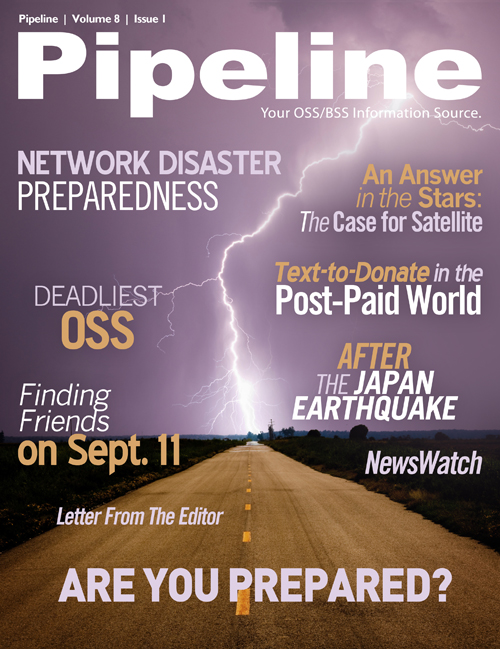By: Ed Finegold

Amid discussions of the global economy and ubiquitous access to communications, we take for granted that connecting the world's continents – excluding only Antarctica – are 69 millimeter diameter cables which rest on the ocean floor. Though multiple new cable projects are in progress, there are roughly 121 subsea communications cables in service today. Major outages, which are rare but generally caused by anything from ships dragging anchor in storms to seismic events, can take weeks to repair. How subsea cable operators deal with the risks and realities of operating their networks; planning redundancies to deal with outages and disasters; and executing maintenance operations sometimes thousands of meters below the sea takes us out of the back office – where OSS usually lives – and into some of the harshest and most dangerous areas of the planet.
Lighting the Dark Continent
The West Indian Ocean Cable Company (WIOCC)is a consortium jointly owned by 14 African telcos and partially funded by the World Bank and five other development banks. It is a wholesale capacity provider that services Tier 1 and 2 African carriers and offers a one-stop-shop for access to Africa for major global carriers that aims to "take away the pain of reaching these hard to reach places," says Ryan Sher, COO for WIOCC.


WIOCC is the primary operator of the East African Submarine Cable system (EASSy), a 10,000-km fiber-optic subsea cable that runs along the coast of East Africa from Sudan to South Africa, linking points in Djibouti, Somalia, Kenya, Tanzania, Comoros, Madagascar and Mozambique along the way. As are most subsea cables, EASSy consists of a single-fiber strand that uses SDH technology to provide 4.8 terabits of capacity.
Several things about this cable should become evident immediately. First, the 4.8 TB capacity should dispel the myth that satellites can provide back-up for subsea cable outages. "Satellite is one or two gigabit," says Sher, "so they can't restore services. They're only used where you can't get cable." Sher explains that the EASSy cable carries "a huge amount of Africa's traffic." While it's not the only cable connecting Africa to the rest of the world, if this cable suffers an outage is can mean an extended period of time without access to the economic opportunities the Internet creates for millions of people.
Fortunately, subsea cable outages are uncommon. "There are few moving parts, so it's quite rare to have equipment failure; less than 1 in 20 years," says Sher. The biggest threats to subsea cables, he says, are ship anchors and geologic or seismic events. A cable cut will result in a major outage because it almost impossible to build in physical redundancy. "Most subsea cables are single strand;" Sher says, "when you lay something thousands of kilometers deep, it's not easy to build in loops."
Generally, he says, companies that leverage the EASSycable seek what he refers to as "continental diversity" where capacity is leased on cables that run the length of both the east and west coasts of Africa. IP networks have the ability to make real-time routing decisions in case of an outage, so this kind of basic redundancy plays well in the IP world.
Continental diversity is one example of the kind of multi-cable leasing international carriers and enterprises will conduct in order to achieve network redundancy. Designing networks that rely on multiple cables that traverse different subsea channels helps minimize exposure to damage from common events.








